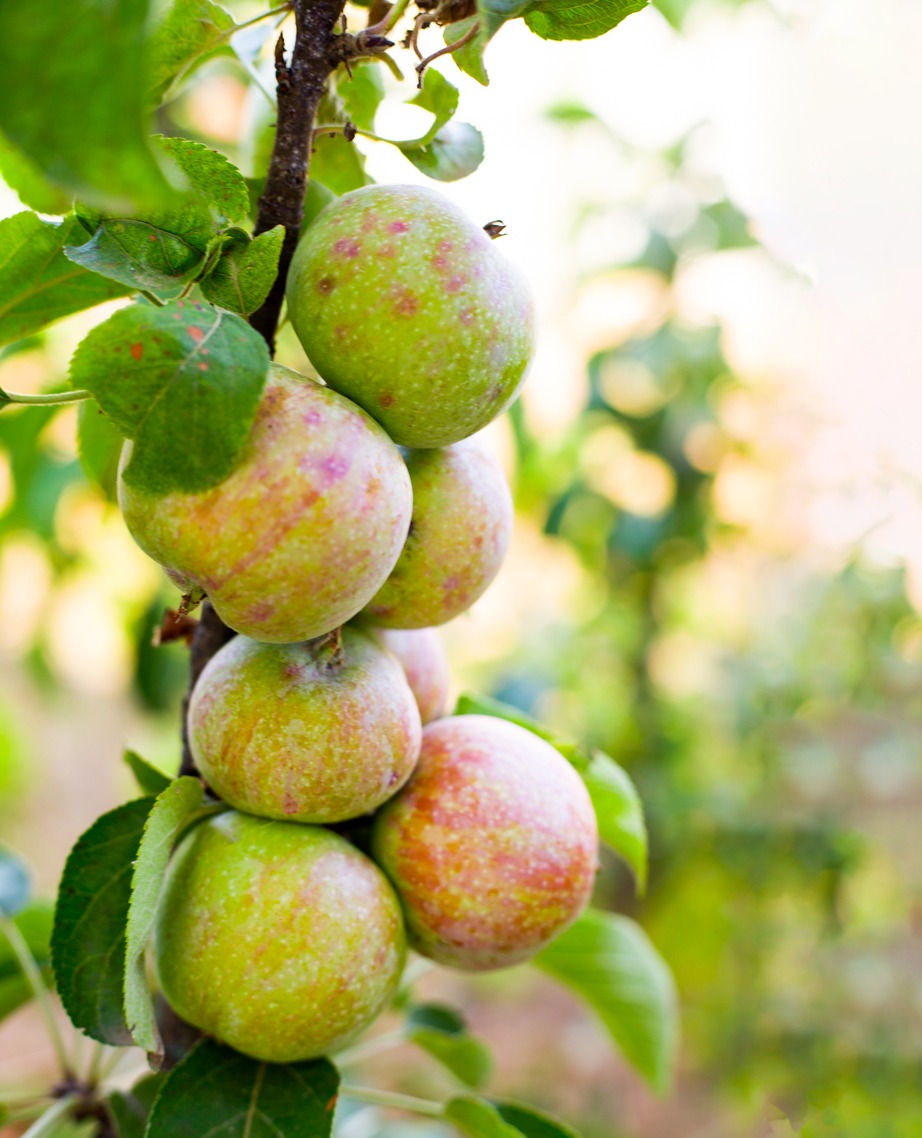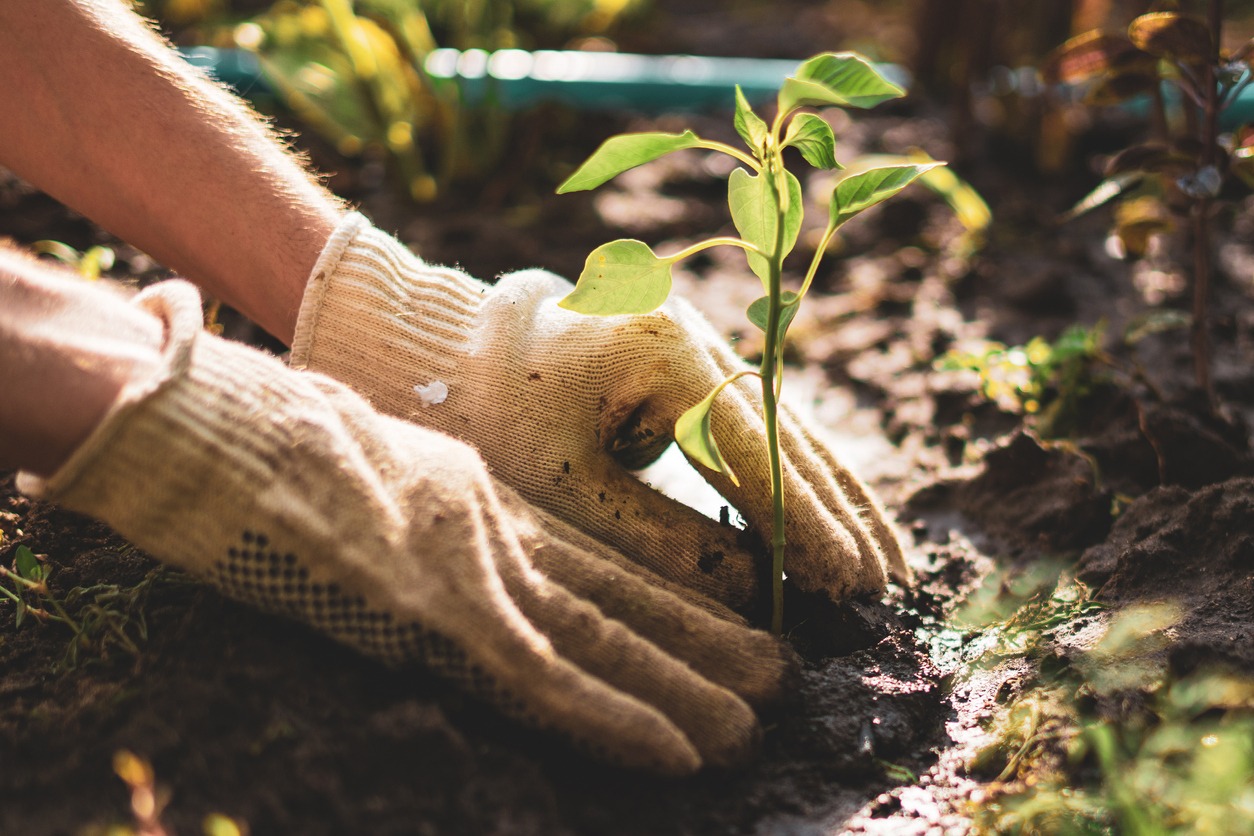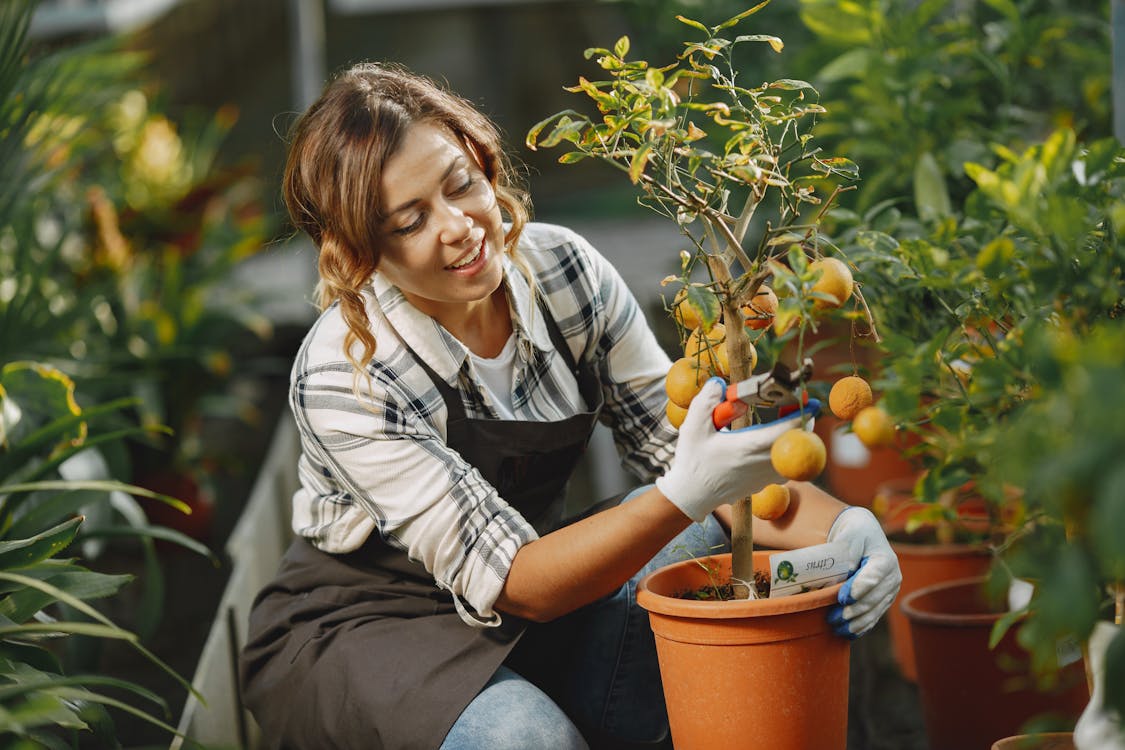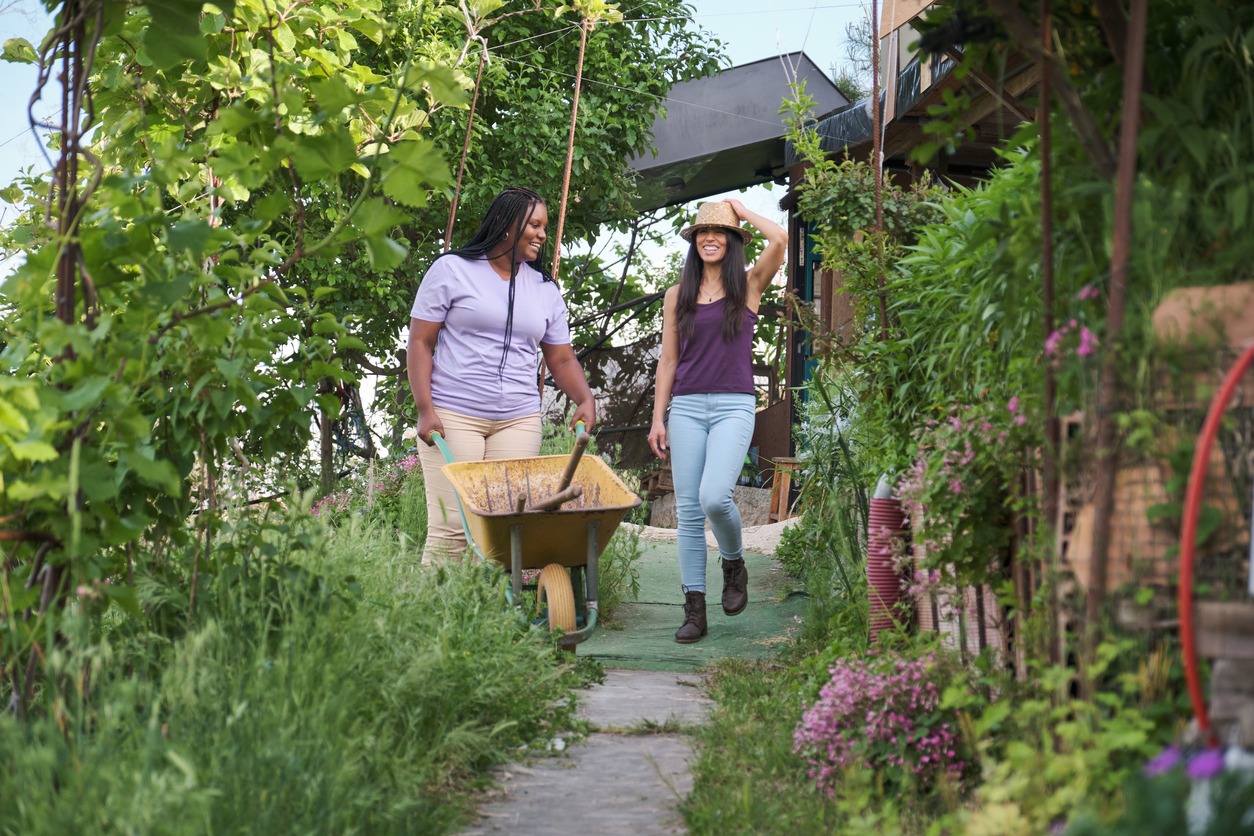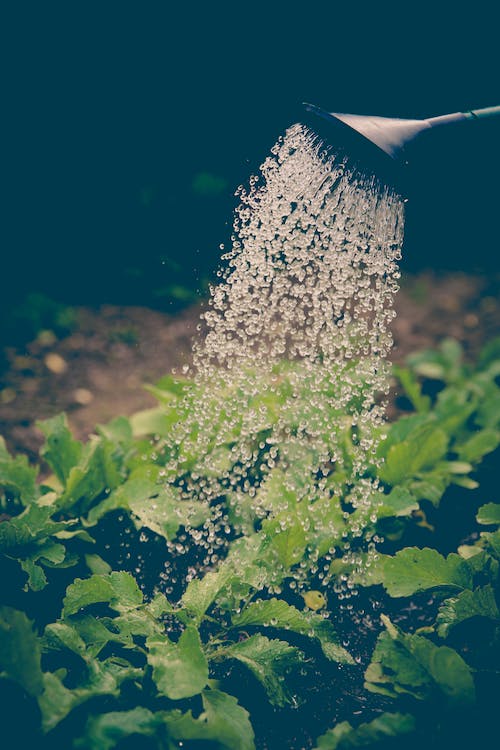Columnar fruit trees offer an ideal solution for green-thumbed city dwellers with limited space. Characterized by their vertical growth habit, these trees ascend upwards rather than spreading outwards, making them perfect for small urban gardens. Unlike traditional fruit trees that can reach expansive widths and heights, columnar varieties grow to a modest size—usually not exceeding 8 to 10 feet tall and 2 to 3 feet wide. This unique growth pattern results in a slender, spire-like shape that not only saves space but also contributes a touch of elegance to the urban landscape.
While they may be compact in form, columnar fruit trees do not compromise on the quality or size of their bounty. These trees are capable of producing standard-sized fruits, which are as delicious as those grown on their larger counterparts. Their short branches make maintenance, such as pruning and harvesting, more manageable, and their stature makes them suitable for container planting, providing flexibility for gardeners to move them if necessary.
Incorporating columnar fruit trees into urban gardens not only maximizes the use of tight spaces but also enhances the sustainable aspect of city living. Gardeners can enjoy the satisfaction of home-grown fruits for years to come while contributing positively to the environment. Efficient, manageable, and productive, columnar fruit trees are transforming small gardens into fruitful havens amidst the urban sprawl.
Understanding Columnar Fruit Trees
Columnar fruit trees offer a compact growth solution for urban gardens, boasting a vertical growth habit and the production of full-sized fruit.
Characteristics and Growth Habit
Columnar fruit trees, particularly known for their unique vertical growth pattern, develop a main stem with short lateral branches. Unlike traditional trees, they maintain a slim profile, typically reaching heights of 8 to 10 feet and widths of only 2 to 3 feet at maturity. This growth habit is frequently referred to as “columnar” or “fastigiate.” These trees are well-suited to small spaces due to their minimal horizontal spread.
- Growth Habit:
- Height: 8 to 10 feet
- Width: 2 to 3 feet
- Shape: Vertical, spire-like
The majority of the fruit is produced along the central leader of the tree, which makes harvesting more manageable. Columnar apple trees are particularly noted for being true columnars.
Types and Varieties
There are several types of columnar fruit trees, with apple varieties being the most prevalent. These include the Malus domestica ‘Colonnade’ and ‘Ballerina’ series, which have been bred for their columnar growth habit. Within these series, specific varieties offer different fruit characteristics and ripening times:
- Ballerina Series:
- Scarlet Sentinel: Produces large, sweet apples with a red blush.
- Golden Sentinel: Yields golden-yellow apples with crisp, juicy flesh.
While columnar apple trees remain the most prominent, other fruit trees such as peach, cherry, pear, and plum may exhibit narrow upright growth but aren’t true columnars. The primary appeal of these varieties lies in their suitability for urban environments where space is limited but the desire for homegrown fruit is high.
Selection and Planting
When integrating columnar fruit trees into urban gardens, it’s essential to focus on selecting the right varieties for the environment, preparing the soil and site to meet the specific needs of these trees, and applying correct planting techniques to ensure their health and productivity.
Choosing the Right Varieties
Columnar fruit trees come in various forms, but apple trees are the only ones considered true columnars. However, urban gardeners can also find columnar varieties of peach, cherry, pear, and plum trees. These varieties are specifically bred for narrow growth without substantial shaping. When selecting a variety, gardeners should consider their local climate and hardiness zones to ensure the tree can thrive. For most types of columnar fruit trees, gardeners should plant at least two, within 100 feet of each other, to promote cross-pollination and fruit production.
Soil and Site Requirements
The ideal site for planting columnar fruit trees should offer full sun exposure, as these trees need plenty of sunlight to produce fruit. The soil should be well-drained and rich in organic matter. Gardeners can check their soil type and amend it with compost or other organic material as needed to improve its fertility and structure. When planting in pots, large containers such as whiskey barrels are suitable to accommodate the root system while allowing for relocation if necessary.
Planting Techniques in Urban Spaces
Urban spaces often require creative planting techniques due to limited area. To plant columnar fruit trees:
- Dig a hole twice as wide and the same depth as the tree’s root ball.
- Place the tree in the hole and backfill with soil, ensuring the tree stands straight.
- Water thoroughly after planting.
When space is at a premium, columnar fruit trees can be planted in pots or containers, allowing them to be positioned on balconies or patios. Whiskey barrels are an ideal container choice due to their size and depth, providing ample space for root growth. If planting in the ground, allow at least 2 feet between each tree to enable air circulation and access for maintenance.
Tree Care and Maintenance
Proper care and maintenance are critical to ensuring the health and productivity of columnar fruit trees in urban gardens. Adherence to specific watering, feeding, pruning, and pest management practices will greatly enhance the tree’s performance.
Watering and Feeding
Columnar fruit trees require consistent watering to establish deep roots and support growth. They should be watered deeply once a week, allowing the soil to dry out between watering sessions. Over-watering can lead to root rot, so it is important to ensure good drainage.
A balanced approach to feeding is equally important. In the spring, fertilizers high in nitrogen should be used to encourage strong leaf growth, while in the late summer, phosphorus and potassium in the fertilizer promote fruit development. Use a high-quality compost or organic matter to add nutrients and improve soil structure. Applying mulch helps retain moisture and gradually releases nutrients as it breaks down.
Pruning and Training
Regular pruning ensures that columnar fruit trees maintain their shape and promotes healthy fruit production. Prune in late winter to remove any dead or diseased wood and to shape the tree. Summer pruning restricts growth and encourages fruiting.
Ties and staking may be needed to support the tree, especially when it’s loaded with fruit or during the initial stages of growth. Ensure that ties are not too tight to avoid damaging the tree trunk.
Disease and Pest Management
Columnar fruit trees can be susceptible to certain diseases and pests, but regular maintenance can reduce these risks. Inspect trees frequently for signs of trouble, such as discolored leaves or unusual spots.
Employing organic pest management strategies, such as introducing beneficial insects or using horticultural oils, can manage pest populations. For diseases, proper air circulation through pruning and strategic planting may prevent many common fungal issues. When problems are detected, treat them promptly with appropriate organic or traditional remedies, always following safety guidelines and usage instructions.
Pollination Strategies
Pollination is a critical factor in growing healthy fruit trees, especially in an urban garden setting. Adequate pollination can ensure a fruitful harvest, while the choice of rootstock can influence the growth and productivity of the fruit trees.
Cross-Pollination and Pollinators
For fruit trees such as apple trees, cross-pollination is typically essential. Cross-pollination occurs when pollen from the flowers of one tree fertilizes the flowers of another. This process is often necessary for the production of fruit, particularly for apple trees, which are predominantly self-unfruitful. In urban gardens, where space is at a premium, ensuring cross-pollination can be a challenge.
Pollinators are the key players in cross-pollination. These include bees, birds, and other insects that carry pollen from one flower to another. Urban gardeners can attract pollinators by planting a diversity of plants that flower at different times, providing a consistent source of nectar and pollen. For columnar apple trees, which have limited space for branches, gardeners must consider the proximity to other apple trees or compatible crab apple trees, which can serve as pollinators.
Understanding Rootstock
The rootstock of fruit trees, particularly apple trees, is the root system onto which the fruit-bearing portion of the tree is grafted. Rootstock can dictate the overall size of the tree, its vigor, and its suitability for certain environments. Urban gardeners often choose dwarfing rootstocks because these limit the size of the tree and make it more manageable in smaller spaces.
There are also self-pollinating fruit trees, which do not require another tree for cross-pollination. However, even self-pollinating trees often benefit from the presence of other fruit trees, as this can enhance fruit set and quality. When selecting fruit trees for an urban garden, one should consider both the type of rootstock and the pollination requirements to achieve successful fruit production.
Urban Garden Considerations
In urban environments where space is premium, selecting the right fruit trees and optimizing their placement are crucial elements for a successful harvest.
Optimizing Space and Sunlight
Urban gardens often have limited area, making it essential that every square inch is used effectively. Columnar fruit trees are an excellent choice for small gardens and narrow spaces, growing vertically up to 8 to 10 feet tall while only requiring 2 to 3 feet in width. These trees can be spaced closer together than traditional fruit trees, allowing for a variety of different species in a compact area. Gardeners should ensure that each tree receives adequate sunlight, which is vital for fruit production. For balcony gardens, positioning trees so that they get several hours of direct sunlight without shading one another is key.
- Sunlight Access: At least 6-8 hours of direct sunlight.
- Spacing: 2 to 3 feet apart to prevent overcrowding.
Container Gardening
Containers offer a flexible solution for growing columnar fruit trees in urban spaces, including balconies and terraces. They allow for movement to optimize sunlight exposure and make use of vertical space. Containers such as whiskey barrels are large enough to accommodate the root systems of columnar fruit trees yet compact enough to fit into small areas. When choosing containers, one should ensure proper drainage and stability to support the tree’s growth.
- Container Size: Large enough for root growth (e.g., whiskey barrels).
- Drainage: Must have holes to prevent water logging.
- Materials: Preferably wood or other breathable materials.
Harvesting and Utilization
Columnar fruit trees present an efficient solution for fruit production in restricted spaces, yet require considerate harvesting and utilization strategies to optimize yield and flavor. Proper technique and timing are essential for maintaining the quality and sweetness of the fruit.
Timely Harvesting
Harvest Timing: It is critical for gardeners to monitor their columnar fruit trees for signs of maturity to ensure a timely harvest. For most varieties, this period occurs when the fruits are fully colored and slightly soft to the touch. Sweetness and flavor are at their peak just before the fruit becomes overripe.
Yield: While smaller in stature, a mature columnar fruit tree can yield approximately one-eighth bushel of fruit per season. Gardeners should plan their harvest schedules according to the expected yield to avoid waste.
Storage and Usage
Storage: Once harvested, appropriate storage methods are vital for extending the shelf life of the fruit. Cool and humid conditions are usually recommended, as they help maintain freshness and delay spoilage. For example, apples should be stored at temperatures just above 0°C with high humidity to keep them crisp and sweet.
- Short-Term Storage: Refigeration in plastic bags with holes for air circulation.
- Long-Term Storage: Cellaring in breathable containers or specialized fruit storage units.
Usage: Columnar fruit trees typically produce normal-sized fruits, ideal for fresh consumption due to their flavor and sweetness. Additionally, the fruits can be utilized in cooking and canning, which are excellent ways to preserve the harvest. When used in recipes, the inherent sweet flavor of freshly picked fruit enhances the taste of pies, jams, and other culinary creations.
Advantages and Challenges
When incorporating columnar fruit trees into urban gardens, one can enjoy their compact nature and potential for ample yield. However, one must also be prepared to tackle specific challenges that come with their upkeep.
Benefits of Columnar Fruit Trees
- Size: They are smaller in stature, typically reaching 8-10 feet in height, which makes them suitable for confined spaces such as balconies and small backyards.
- Yield: Despite the compact size, columnar trees can still produce a substantial amount of fruit.
- Spread: With a limited spread, usually not extending beyond 2-3 feet, they can be planted closer together, increasing variety in a limited area.
- Maintenance: These trees require minimal pruning due to their upright growth habit.
| Benefit | Description |
|---|---|
| Space-Efficient | Ideal for small urban spaces due to limited height and spread. |
| Higher Yield | Capable of producing plentiful fruit within 2-3 years. |
| Lower Maintenance | Less pruning and space management required. |
Potential Challenges and Solutions
- Expensive: Initially more expensive than traditional fruit trees, but their longer productive lifespan can offset the upfront cost.
- Damaged Branches: Short branches may be prone to damage but can be managed by careful placement to avoid high-traffic areas.
- Success: To ensure successful cultivation, provide ample sunlight, regular watering, and proper fertilization.
| Challenge | Solution |
|---|---|
| Higher Initial Cost | View as a long-term investment. |
| Risk of Branch Damage | Place trees in low-traffic areas and provide proper support. |
| Ensuring High Success | Follow recommended care guidelines specific to the tree variety. |
Maintaining columnar fruit trees involves careful consideration of their particular needs, but the rewards are well-suited to the urban gardener’s limited space.


